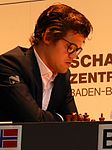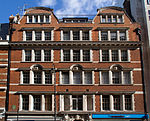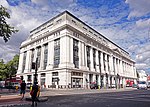Old Devonshire House

Old Devonshire House at 48 Boswell Street, was located between Theobald's Road in Bloomsbury, and Queen Square, London. William Cavendish, 3rd Earl of Devonshire had the house built in 1668 for his son, also called William Cavendish, who was MP for Derby at that time and eventually became the 1st Duke of Devonshire in 1694. This house was later sold by William Cavendish, 3rd Duke of Devonshire, who built Devonshire House in fashionable Piccadilly. Major George Henry Benton Fletcher bought Old Devonshire House in 1932, to display his keyboard collection. He donated the house and his collection to the National Trust in November 1937. The house was destroyed in May 1941 by a Luftwaffe bombing raid on Holborn during the Blitz. Most of his keyboard instruments had been evacuated to Gloucestershire before the raid. These survived and are currently on display in Fenton House, Hampstead.
Excerpt from the Wikipedia article Old Devonshire House (License: CC BY-SA 3.0, Authors, Images).Old Devonshire House
Old Gloucester Street, London Bloomsbury (London Borough of Camden)
Geographical coordinates (GPS) Address Nearby Places Show on map
Geographical coordinates (GPS)
| Latitude | Longitude |
|---|---|
| N 51.52 ° | E -0.1207 ° |
Address
Falcon
Old Gloucester Street
WC1N 3AL London, Bloomsbury (London Borough of Camden)
England, United Kingdom
Open on Google Maps










